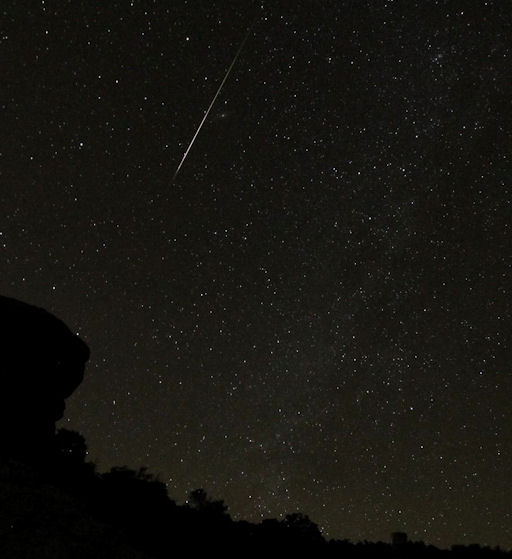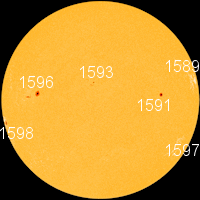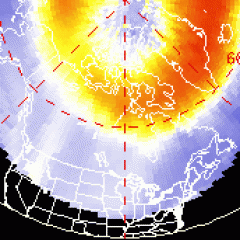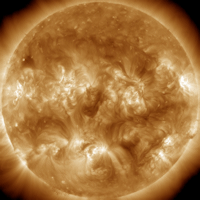~Space Weather Update~ ALMOST-X FLARE: [1]
ALMOST-X FLARE: On Oct. 20th at 1814 UT, Earth-orbiting satellites detected a strong M9-class [2] solar flare. The source was a new sunspot, AR1598, emerging over the sun's southeastern limb. NASA's Solar Dynamics Observatory recorded the extreme ultraviolet flash (image [3]), which sent waves of ionization [4] rippling through Earth's upper atmosphere. More flares are in the offing. NOAA forecasters estimate a 40% chance of M-flares and a 10% chance of X-flares during the next 24 hours. Solar flare alerts: text [5], voice [6].
ORIONID METEOR UPDATE: The Orionid meteor shower [7] is underway as Earth passes through a stream of debris from Halley's Comet. International meteor counts [8] suggest a broad peak of about 25 meteors per hour centered on Oct. 21st. If the trend holds, sky watchers can expect to see a dozen or so Orionids flitting across the sky every hour after midnight on Oct. 21-22. Got clouds? Try listening for Orionid 'pings' on the realtime meteor radar [9].
Last night, Oct. 21st, Bill Vaughn photographed this piece of Halley's Comet burning up over Mt. Lemmon, north of Tucson, Arizona:

![]()
Solar wind
speed: 356.7 km/sec
density: 2.2 protons/cm3
explanation [11] | more data [12]
Updated: Today at 1917 UT
![]()
X-ray Solar Flares
6-hr max: C1 1316 UT Oct21
24-hr: C7 0308 UT Oct21
explanation [13] | more data [14]
Updated: Today at: 1859 UT
![]()
![]()
![]()
Daily Sun: 21 Oct 12
![]()
![]()
New sunspot 1598 poses a threat for M- and X-class [2] solar flares. Credit: SDO/HMI
![]()
![]()
![]()
Sunspot number: 112
What is the sunspot number? [16]
Updated 21 Oct 2012
Spotless Days
Current Stretch: 0 days
2012 total: 0 days (0%)
2011 total: 2 days (<1%)
2010 total: 51 days (14%)
2009 total: 260 days (71%)
Since 2004: 821 days
Typical Solar Min: 486 days
Update 21 Oct 2012
The Radio Sun
10.7 cm flux: 151 sfu
explanation [17] | more data [18]
Updated 21 Oct 2012
![]()
![]()
![]()
Current Auroral Oval:
![]()
Switch to: Europe, USA, New Zealand, Antarctica
Credit: NOAA/POES
![]()
![]()
![]()
Planetary K-index
Now: Kp= 1 quiet
24-hr max: Kp= 1 quiet
explanation [20] | more data [21]
![]()
Interplanetary Mag. Field
Btotal: 4.3 nT
Bz: 0.0 nT
explanation [22] | more data [23]
Updated: Today at 1916 UT
![]()
![]()
![]()
Coronal Holes: 21 Oct 12
![]()
![]()
There are no large coronal holes on the Earthside of the sun. Credit: SDO/AIA.



